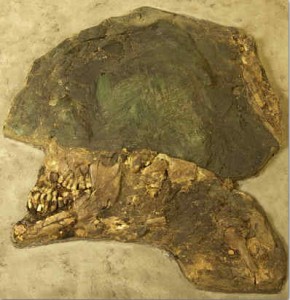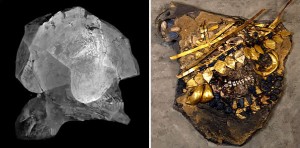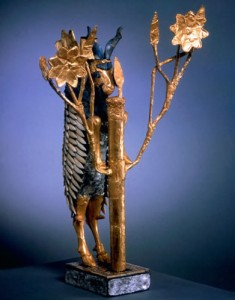 Royal burials uncovered at Ur in the 20’s were replete with thousands of courtiers buried along with their royal masters. C. Leonard Woolley, the director of the excavations at the time, thought the careful burials indicated a solemn, peaceful death, like maybe they all got dressed up pretty, marched into the tomb and took poison.
Royal burials uncovered at Ur in the 20’s were replete with thousands of courtiers buried along with their royal masters. C. Leonard Woolley, the director of the excavations at the time, thought the careful burials indicated a solemn, peaceful death, like maybe they all got dressed up pretty, marched into the tomb and took poison.
For years that has been the convention wisdom. The remains were in many tiny pieces, crushed by the pressure of tons of earth and later burials that compressed the skeletons over the 4500 years since their deaths, so archeologists really haven’t had a chance to use any modern scientific tools on them.
Now the University of Pennsylvania is putting on an exhibit of artifacts from Ur, so researchers took the opportunity to take CT scans of skull pieces from a man and woman. The CT scan data was used to make a 3D image of where the skull fragments fit together.

The researchers, led by Janet M. Monge, a physical anthropologist at Penn, applied forensic skills to arrive at the probable cause of death in both cases.
There were two round holes in the soldier’s cranium and one in the woman’s, each about an inch in diameter. But the most convincing evidence, Dr. Monge said in an interview, were cracks radiating from the holes. Only if the holes were made in a living person would they have produced such a pattern of fractures along stress lines. The more brittle bones of a person long dead would shatter like glass, she explained.
Dr. Monge surmised that the holes were made by a sharp instrument and that death “by blunt-force trauma was almost immediate.”
 The research also turned up evidence that some of the sacrificed courtiers had been baked (as in heat, not as in weed) and treated with a mercury compound, which suggests a primitive mummification procedure, probably necessary to keep the bodies from decomposing during long funerary rituals as well to help pose them for banquet tableaux and the like.
The research also turned up evidence that some of the sacrificed courtiers had been baked (as in heat, not as in weed) and treated with a mercury compound, which suggests a primitive mummification procedure, probably necessary to keep the bodies from decomposing during long funerary rituals as well to help pose them for banquet tableaux and the like.
The Penn exhibit includes the two highly decorated skulls, plus 220 other objects from the site. They have a wonderful companion online exhibit too, featuring lectures, zoomable pictures of gold jewelry, pre and post-conservation pictures, details about the original expedition, details about the current research, and oh so much more.
There’s at least a semester’s worth of college in that online exhibition, I swear.